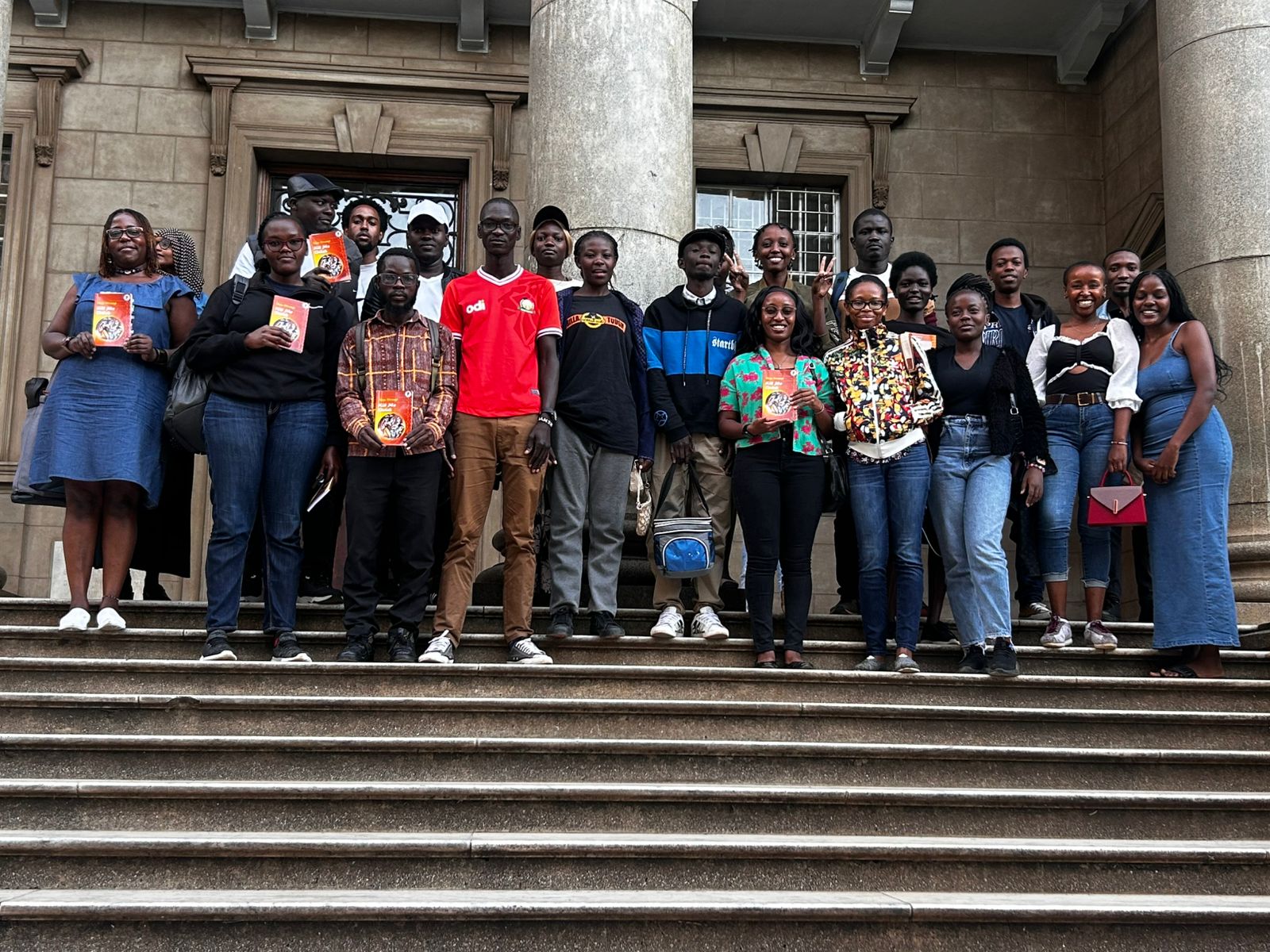“There are things known and things unknown, and in between are the doors of perception,” writes Aldous Huxley.

I have always affirmed, though ambivalently, that our truths often reside in others. Social constructionism, thanks to Peter L. Berger and Thomas Luckmann, asserts that reality is not an objective given but a product of social interactions, shared meanings and cultural negotiation. Of course, positivist and essentialist traditions pose significant challenges to this constructivist view, hence my ambivalence. Yet the proposition that truth and meaning are, at least in part, discoverable through others is difficult to dispute.
Back to Huxley. The afore-quoted is a poetic encapsulation of Huxley’s belief that human perception acts as a filter between the mind and reality. In his The Doors of Perception (1954), Huxley contends that the brain is a “reducing valve”, limiting what we perceive in order to function in everyday life. I believe Huxley was contemplating the mysterious thresholds of human consciousness here. But one might argue that he was also, albeit unwittingly, describing a book club.
Well, let me elaborate.
When people read and discuss books together, they expose themselves to new ideas, perspectives and interpretations. A book you thought you understood can take on an entirely new meaning when seen through someone else’s eyes. Books offer knowledge, the “things known”. But every reader brings to the text their unique background, biases, emotions and imagination, which act as filters. Nowhere is this more evident than in the reading of fiction. In this sense, reading is never neutral. What one reader sees as ‘victory’, another sees as ‘tragedy’. These subjective interpretations form the “things unknown”. They are the ambiguities that cannot be fixed or universally agreed upon. This is where a book club becomes indispensable. It is the middle ground, the space Huxley refers to as the “doors of perception”. Here, conflicting interpretations do not cancel each other out but deepen our engagement with the text. A character previously seen as villainous may be reconsidered as a victim; a theme initially overlooked may emerge as central. The discussions, in such moments, go beyond literary critique and begin to probe the pliable boundaries of human perception itself.
I discovered the metaphorical richness of Huxley’s insight when, on the cool Saturday afternoon of May 31st, I sat among a group of about thirty readers in one dimly lit corner of the MacMillan Library along Nairobi’s Banda Street to discuss a book. It was Meja Mwangi’s seminal debut, Kill Me Quick, first published in 1973 by Heinemann Educational Books as part of their African Writers Series. The gathering and its organisation, from its inception a month prior to the very day we sat down, was the work of Lexa Lubanga, a literary activist and, by all accounts, a devoted volunteer publicist of Meja Mwangi’s oeuvre.
For those unfamiliar with Lexa, she has been dedicated to revitalising Kenya’s literary scene. Through her pioneering initiative, Kenya Readerthon, Lexa has cultivated a national literary movement with the ambition of foregrounding Kenyan authors and restoring local literature to the public. What began as a simple call to read Kenyan books has since evolved into a multi-month event, featuring themed reading periods, author interviews, and community discussions both online and in person. It is no exaggeration to say that the resurgence of literary vibrancy within the Kenyan cultural scene owes much to her efforts. Notably, The Star recently called her “the literary dynamo of Gen Z”.
It is therefore not surprising that when Lexa announced the launch of the ‘Meja Mwangi Book Club’, a good number of people showed interest. The aim of the club is to read and discuss one of Meja Mwangi’s works each month, sequentially according to their original publication. Kill Me Quick, as his inaugural novel, fittingly inaugurated the series of what is set to go on for no fewer than twenty months, if the current bibliographic record is anything to go by.
But it was the discussion that followed which proved most compelling. After a few selected readings, participants offered spontaneous reflections. It was within the walls of that club, amid the heated debate, that Huxley’s evocative lines found a home.
Before delving deeper into the discursive richness of that afternoon, let us briefly examine what Meja Mwangi’s Kill Me Quick is about. This 170-page novel charts the grim story of two young village men who move to the city after earning their secondary school certificates. They hope to find jobs and support their families back home, but upon arriving in the city, they are confronted with the harsh realities of urban life. Despite their efforts, they are unable to secure employment and are forced to survive in Nairobi’s backstreets, living in dumpsters and feeding on discarded food. Their descent into desperation leads them to crime, addiction, and ultimately, ruin.
Meja Mwangi might have thought well to give the book the title “Kill Me Quick”, for it is a reflection of the characters’ psychological despair and the existential pain of wasted youth in a system that offers them no future. His narrative lays bare the structural decay of postcolonial urban Kenya, where the promises of education and modernity have given way to betrayal and disillusionment. Nearly everyone who has read Mwangi would agree that he has mastered the art of portraying the brutal realities of city life and the disappointment that often follows the move from village to urban centre.

One particularly moving part of the book is when each protagonist makes separate attempts to return to their rural homelands after enduring severe hardship in the city, but their homecomings are anything but redemptive. They feel alienated, but even more painfully, rejected by the very people who once expected great things of them. It is in these moments that Mwangi’s narrative goes beyond the social commentary and enters the realm of existential literature, where belonging, identity, and the meaning of one’s place in the world are brutally interrogated.
“He was going to go right back home...back to his people to tell them to kill him themselves if they did not want him. He looked at his thin limbs and ragged clothes and shook his head...” writes Mwangi.
In another equally evocative moment, Mwangi narrates the inner turmoil of the second protagonist: “He came to the fork in the path. To the right, it led to his home and to the left, on and on through the neighbours’ lands to the wilderness of strangers. Here he stopped and hesitated, one foot on the path that led to his father’s house and the other on the other path that led into the distant unknown. His head cried for release from indecision and his body began to tremble...”
Thus, Mwangi compellingly captures the weight of humiliation carried by his characters after being chewed up and cast aside by the city. Their return home is a gesture of resignation, a last resort when all other avenues have collapsed. Yet even home, instead of serving as a refuge, becomes a site of profound psychological entrapment. The act of returning becomes a threshold into a deeper despair, as poignantly illustrated through one protagonist’s indecisiveness: “...but his mind could not overcome the barriers between him and his people. What would he say? What would he say and what would they do? And then what would he do?” The ‘he’ refers to the character’s father, whom he imagines waiting at home with the weight of expectations the son can no longer bear. Mwangi uses this moment to expose the emotional paralysis that afflicts those caught between displacement and return, between failed aspirations and the fear of confronting one’s own perceived failure.
The invocation of death— “to tell them to kill him themselves”— is perhaps a plea for either acceptance or final rejection. Once full of promise, each young man returns home as a hollowed version of his former self, fully aware of the stigma they now carry. The indecision to pick a path to home or go the other way embodies the immobilising tension between ‘shame’ and ‘fear’. This is the kind of despair that traps a man between memory and oblivion, between where he once belonged and where he now exists, unseen and unwanted.
And speaking of shame, it is the emotional engine of this book. It is the kind of feeling that often accompanies failures, especially among educated young men whose dreams are systematically crushed by structural inequality and societal indifference. Shame, the ‘internalised shame’, according to psychoanalyst Helen B. Lewis, is so harrowing that it leads one to see oneself as fundamentally flawed. The profound fear of being perceived as a failure jeopardises one’s sense of belonging within their community. After failure, there is often a sense of being so unwanted, of stripped of worth, that one would rather die than endure a moment of alienation. Lewis, in exploring the debilitating nature of shame, notes that it can “...lead to a sense of worthlessness and a desire to hide or disappear...”. He observes that shame often results in a ‘loss of self-esteem’.
During the book club discussion, many participants expressed empathy for the protagonists’ decision not to return home, with the majority admitting that, placed in a similar predicament, they might have chosen the same. One particularly thought-provoking question that emerged was; faced with such despair, which fate would be more bearable—returning home to endure shame and potential ridicule, or surrendering to the desolation of urban anonymity? Mwangi deliberately leaves this question unresolved as he offers no account of how the young men’s families might have received them had they returned. This narrative gap opened space for speculative interpretation, with readers imaginatively reconstructing alternative outcomes.
For some, the warmth of maternal embrace, the smiles of siblings, and the general familial acceptance might have healed the characters. Others were more critical, insisting that return without material success would only deepen the characters’ humiliation. In this view, the act of going home empty-handed would be tantamount to the public tearing of one’s dignity. This divergence in opinion naturally segued into a deeper conversation on masculine identity and social expectation.
A section of readers felt that the despair experienced by the male characters in Kill Me Quick is rooted in society’s construction of masculinity. The young men in the novel are raised in a patriarchal context, and are therefore expected to “make it” and “provide”. Returning home empty-handed is not just a personal failure but represents, in their eyes, a collapse of masculine identity. As one participant explained, a man’s sense of self is socially tied to his ability to provide and succeed. Their pride, shame and reluctance to return home are thus performances of masculinity under intense social duress.
I later discovered that this participant’s interpretation, whether consciously or not, closely aligns with Raewyn Connell’s concept of ‘hegemonic masculinity’, which, Connell defines, is “the configuration of gender practice which embodies the currently accepted answer to the problem of the legitimacy of patriarchy.” Connell argues that while “not all men achieve hegemonic masculinity”, all are judged against it. Men who fail to meet these ideals (e.g., poor, unemployed or emotionally vulnerable men) may experience marginalisation or subordination.
Thus, the male protagonists, acutely aware that their social worth rests on their capacity to succeed and provide, experience a gradual erosion of hope into despondency as they fail to meet these entrenched expectations. Their failure is existentially rooted in a deep sense of misalignment with a society that values men only insofar as they perform specific roles. Mwangi exposes this gendered disparity not only through the male characters’ collapse but also by the marginalisation of female figures in the narrative. Women, though few in number, occupy peripheral roles that accentuate the masculine struggle rather than disrupt it.
One such character is Sara, who briefly appears among the male gang. Despite sharing in the collective hardship, her presence is primarily for companionship, sexual availability, and helping with trivial errands. Mwangi’s distancing of Sara from the gang’s serious dynamic becomes particularly evident in her symbolic departure: “Sara suddenly discovered that she was a woman, not a gangster. She deserted the Razor...” Here, Sara’s femininity is not a contested identity but a given; a socially coded realisation that disqualifies her from participating fully in the masculine world of criminal desperation. Razor, the gang member who assumes responsibility for her, acts as both her guardian and emotional godfather, reinforcing a gender dynamic in which men act and women are acted upon.
A similar pattern emerges with Delilah, a damsel admired by one of the protagonists. Mwangi writes, “He tried to retrace his old girl companion Delilah but without success... Delilah had left to be married two years earlier... had found her man after all.” Delilah’s arc is closed off with marriage, the socially accepted endpoint for female aspiration. She exists not as an agent in the story but as a symbol. Of loss, of closure, and of the paths unavailable to the male characters.
In both portrayals, women navigate the same structural terrain as the men but do so within the parameters of socially sanctioned femininity. Their sexuality becomes a resource for survival, but also the primary site of their objectification. Rather than challenging the existing order, these women conform to it, and in doing so, reflect the very standards against which male characters are measured. In this way, Mwangi constructs femininity as a contrastive backdrop that throws into sharp relief the crisis of masculinity at the heart of his book.
But even more intriguing is how Mwangi uses this book to raise social consciousness. It is from him that we understand the lived realities of the urban underclass. The presentations in the book show structural neglect that defines the lives of the hoi polloi, presenting a city split along violent lines of class and geography. Mwangi vividly captures this duality of the city. One side is the polished affluence of the middle class in gated suburbs, and the other is the desperation of the slum dwellers crammed into informal settlements.
Writes Mwangi: “They walked slowly and carefully among the cars... It was late when they started into the backstreets. The usual rotting odour hit them... They came to the shanties so abruptly... the shacks were built of paper, tin, mud and anything that could keep out the rain, thrown together in no particular pattern. The shacks were so closely built that from the top of the rise..., they looked like a rubbish dump full of paper and shining tin...”
However, it is not just the physical disparity that Mwangi critiques, but the systemic indifference that perpetuates it. The most damning moment comes when Shanty Town, the slum where the protagonists reside, is consumed by fire. In a moment that is evidently a real-life tragedy, the state fails to intervene or assist, leaving residents to fend for themselves in the face of calamity. This institutional apathy, rendered with brutal clarity, suggests that the city’s most vulnerable are not only economically excluded but also politically abandoned. The novel thereby becomes more than a narrative of individual failure; it is an indictment of a social order that treats its poorest citizens as disposable, whose suffering occurs in the blind spot of national conscience.
And while this book was written to portray the socio-economic exploitation and disillusionment in post-independence Kenya, its continued relevance today is both striking and disheartening. During the book club discussion, participants acknowledged that, aside from the absence of smartphones and the internet, little has changed. During the book club discussion, several readers confessed, half jokingly, to having suffered in Nairobi, though perhaps not to the extremes experienced by the characters. Yet others, more soberly, admitted to having witnessed or personally experienced worse. The reflection of the real urban struggle in the novel’s setting affirmed its social relevance and revealed the stark disparities that continue to define Nairobi’s social fabric. This startling continuity explains why the novel hits home for many contemporary readers.
The similarities between the world of the novel and today’s Kenya are hard to miss. The same problems Meja Mwangi wrote about nearly fifty years ago—jobless youth, tough city life, and the mental strain of being overlooked by the system—are still very much part of the Kenyan reality. Even now, young people with degrees are struggling to find work, trapped in an economy that often shuts down new ideas and makes it hard to move up. Just like in the 1970s, we still hear big promises about economic change, but for many, those promises haven’t turned into anything real.
Mwangi’s depiction of Nairobi’s streets is, regrettably, still accurate. The city’s back alleys continue to be choked with waste, and its informal settlements remain overcrowded, insecure and underserved. The city has failed to shed its dystopian character. If anything, it feels more like a place where people are just trying to survive than a land of opportunity. Issues like drug abuse, crime and mental health struggles among young people seem even worse now. That’s why Kill Me Quick still hits hard today. It’s not just about the past; it holds up a mirror to the present, reminding us how much still hasn’t changed and what happens when the same problems keep repeating themselves.

And in light of this, and many other points we didn’t even get to discuss, the club agreed on one thing: both the writer and the reader have a duty to speak out against the injustices facing the downtrodden. The personal struggles of Mwangi’s characters reflect deeper social and political issues still shaping our society. The harsh reality of urban life that Kill Me Quick captures hasn’t gone away. It might be worse today.
As readers, having engaged with the text and connected it to our own lived experiences, we have a responsibility to carry the message forward. Mwangi’s role was to reveal the neglect, the exploitation, and the everyday oppression inflicted by the state. Our role is to echo that voice, to ensure it reaches as many people as possible. Mwangi, in this sense, is like a master musician who strikes the first chord and sets the rhythm—and indeed most writers are. Readers (and book clubs like this one), are the chorus, amplifying that sound far and wide.
A fittingly thoughtful and flowered farewell, then, to the month of May 2025.





